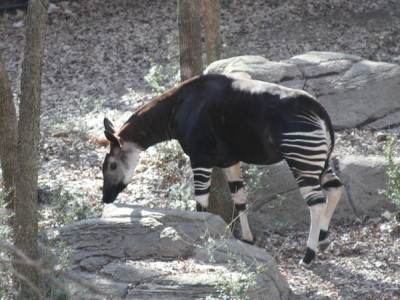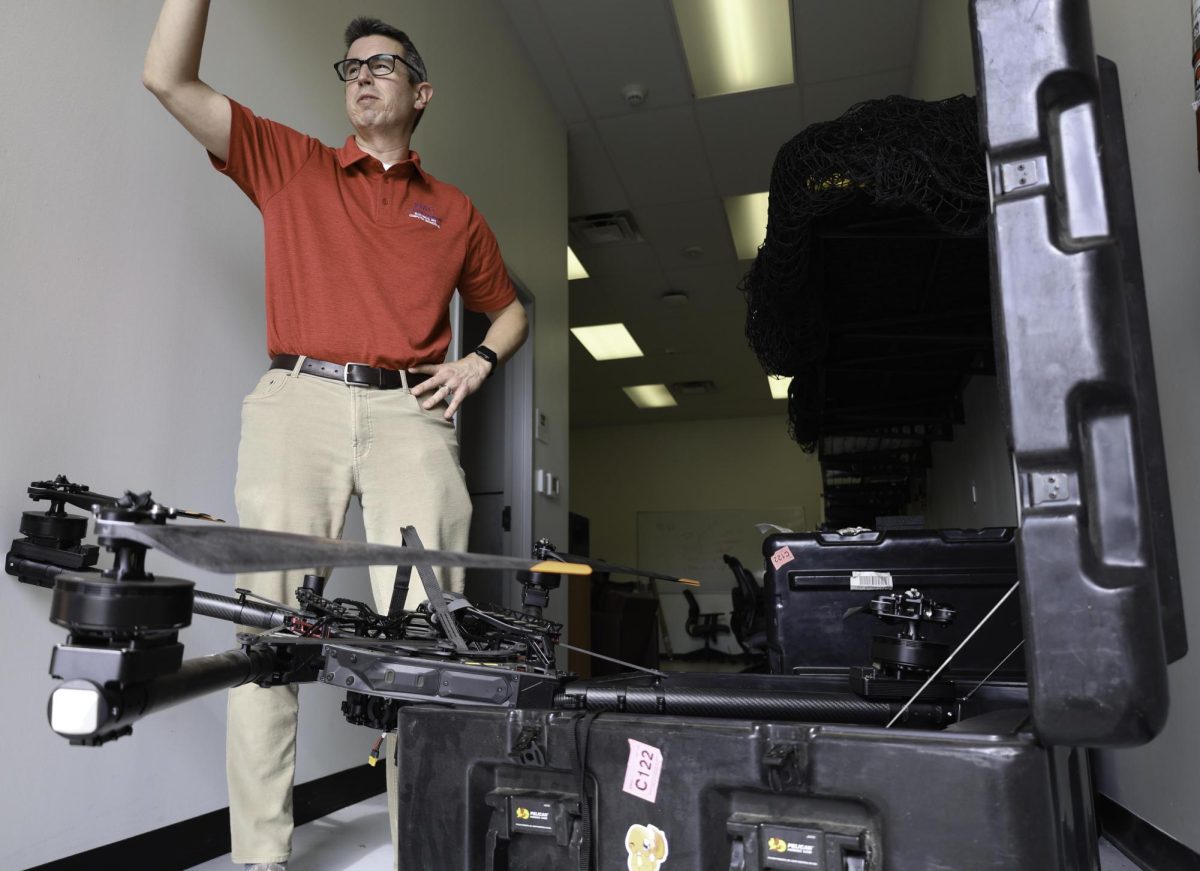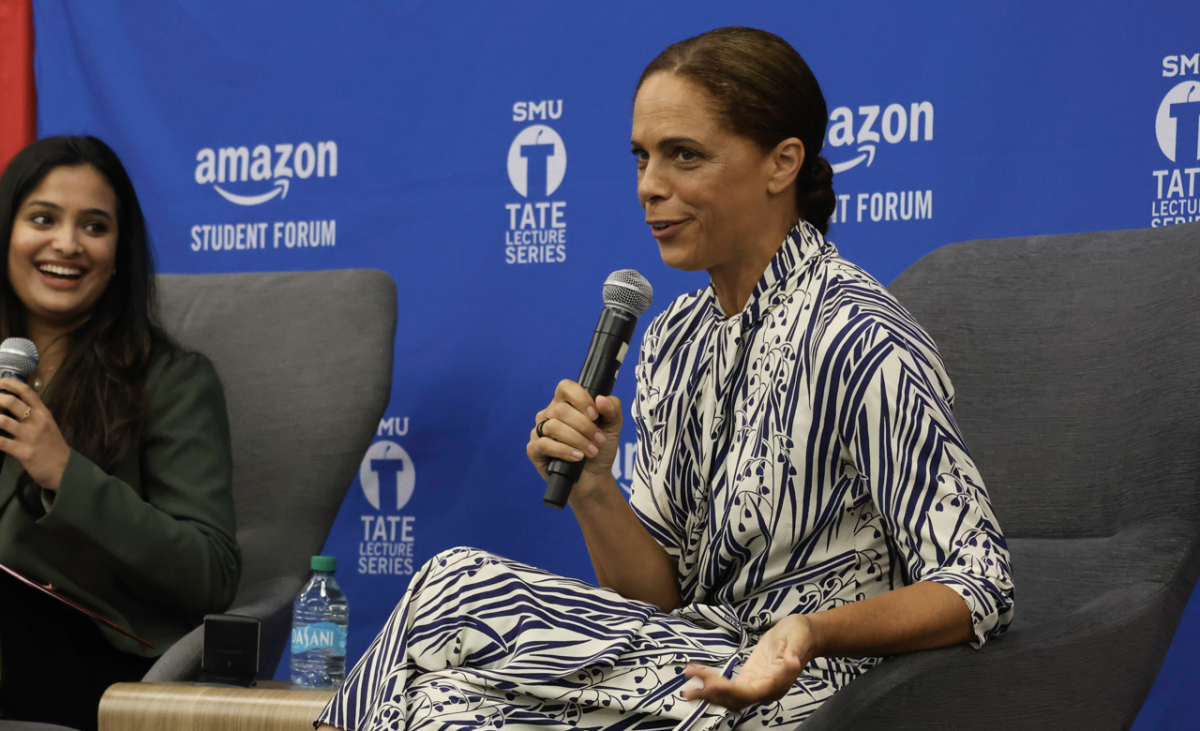
The okapi is a large, reddish-brown hoofed animal that stands over 7 feet tall and can weigh over 700 pounds. Many people mistake it for a species of zebra because of the black and white stripes covering its back legs. But if you look close enough, you might just be able to see the okapi’s resemblance to it’s savanna cousin, the giraffe.
This interesting animal is being bred through the Dallas Zoo’s Special Survival Plan breeding program.
Another animal in the program is the unusual looking southern ground hornbill. This bird, which is about the size of a large turkey, has black feathers and a large beak with a red sack of skin hanging underneath. Two of these amazing birds live on the savanna habitat along the zoo’s monorail safari ride.
“One of the goals of SSP is to collaborate research and husbandry techniques and about what works best,” says okapi keeper Megan Lumpkin.
The zoo has one of the best okapi breeding programs in the world, and one of the oldest. The ground hornbill is one of the zoo’s newest animals in its extensive breeding program.
The Dallas Zoo has hundreds of species of animals in breeding programs, many of which are organized by the national Association of Zoos and Aquariums. These special breeding programs are designed to cooperatively manage the breeding of threatened or endangered species within AZA-accredited zoos and aquariums.
The zoo has long been considered a world-class institution, especially when it comes to difficult-to-breed animals. One such legendary breeding program is that of the African okapi.
The long sloping neck and sweet eyes of the okapi, along with the ossicones (unique horn-like protrusions on their head), 12-inch long tongue and down-right odd coloring make this animal unique and mysterious by any one’s standards. However, add in that they live alone deep in the Congo’s Ituri Rainforest, make sounds in frequencies so low they can’t be heard by humans and excrete a mysterious red oil from their skins and you have a truly one-of-a-kind endangered creature.
Since the early 1980’s this zoo has been ahead of the curve on keeping okapis. These strange and solitary creatures have always proved difficult to breed in captivity, but this zoo has never had much trouble.
“In the early 80’s when the zoo had okapi there were only 16 or 17 okapi in the entire country,” says Lumpkin. “Now there are about 90. And now we can make such a difference in population by collaborating together. It’s a big deal.”
Baby Amalsi, born Aug. 14, 2013, marks the 36th okapi born at the Dallas Zoo.
The first okapi to be born at the Dallas Zoo was Kwanini, a friendly 23-year-old female who loves getting branches of her favorite bush as enrichment, and always appreciates a good ear scratching from her keepers.
The okapi has always been a mysterious animal, since they live solitary lives deep in the forest, so it can be hard for researchers to study wild okapis.
“We don’t know how they behave in the wild,” says Lumpkin. “We don’t know anything they do.”
Because of this, much of what has been discovered at the zoo has set the standards of care for okapi all over the world. They have discovered that the mothers and calves will spend most of their day apart, with the calf lying still in a nest while the mother feeds, and only come together four to five times a day for feeding.
But while the okapi breeding program has been a long running success, the zoo is home to some much newer breeding programs with equally interesting animals.

The southern ground hornbill is the largest species of hornbill bird and can be found naturally across the savannas of Africa. These birds are listed as vulnerable, according to the IUCN Red List, but studies done in South Africa suggest they could be in much worse trouble than scientists previously thought. Their habitat is being cleared for farmland and these birds are dying off.
“These guys have not produced any babies for us yet,” says keeper Jocelyn Womack one day recently while on a tour with a reporter. “But we’ve got a couple of nest boxes set up for them out here.”
The two hornbills live in a large area with a flowing river water-feature running through. They share the space with several other species of animals also found in Africa, like the greater Kudu, a large antelope, two secretary birds, which are large and impressive birds of prey, and even some gazelle called gerenuk, which are known for walking on their back legs to reach leaves.
“I think what’s most enriching for them is having this big space to be able to roam around and do stuff in,” Womack said as the male hornbill shared a patch of grass with a gazelle.
As Womack points out a large bird house on stilts, she discusses how the hornbills enjoy jumping inside and on top of the nest box pounding on it with their bills and making music.
“They do a lot of vocalizations and calls out here. They are able to exhibit more natural behaviors out here than they would in a lot of other places,” she said.
Providing habitats as close to the animals natural space is part of what makes the Dallas Zoo such an educational place for children and adults alike. Without spaces to come and see these animals many people would never even know what an okapi is.
Zoo guest and mother Brooke Steed enjoys bringing her two young children to the zoo.
“They learn a lot about the animals, their habitats and their nutrition,” said Steed, before boarding the monorail safari ride at the Dallas Zoo recently. This is a one-of-a-kind educational safari ride which helps make the zoo as unique as some of the animals is helping to save.
Each of the breeding programs at the Dallas Zoo has one goal in mind: preventing extinction. The AZA coordinates these Species Survival Plan programs so that the captive populations stay genetically diverse and healthy. This helps to ensure that, if the time comes when that species goes extinct in the wild, the animals being bred in captivity could be released and will also have enough members with healthy genes to create a stable new population.
The Dallas Zoo is open seven days a week 364 days a year from 9 a.m. to 5 p.m.








